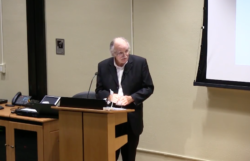The “health” side of the health care debate
Michele Obama’s initiative on child obesity is to be welcomed as long overdue. Like so much of what emerges from this White House, however, the intention is laudable but the impact will be small. Mobilizing the great and the good to improve the labeling on processed food, to redesign physical education programs, and to get more fruit onto the school dinner menu, are all worthy endeavors. However, they just scrape the surface of a problem which is embedded in the very core of our economy and therefore in the way that most of us are currently obliged to live our lives. Individuals cannot easily be healthy in an economy and a society that is not.
We need to start with individual diets and exercise regimens, but if we want real progress on health we certainly must not stop there.
We should start there, of course. As Americans we are becoming obese: obese at an ever earlier age and obese at a growing rate. In June 2009 the Centers for Disease Control and Prevention reported that the direct medical costs of obesity now total $147 billion a year, 9% of all American medical costs. (You can add to that $116 billion to treat diabetes and billions more to treat the cardiovascular and cancer conditions linked to the Western diet.) American fast food not only feeds us fast. It also kills us fast.[1] There are serious life-style issues in play behind the health debate. There are serious issues about agribusiness, about farm subsidies, and about the dangers of industrial food production. There are serious moral hazard issues for all of us to face. We need to ask ourselves some very basic questions that so far many of us have ducked, to our very serious cost. Are we breeding a generation of ever greedier eaters; or are we (and they) the victims of a food industry determined to supersize their profits by supersizing us? Possibly the answer is a little of both, since corporate America creates markets as well as responds to them. But either way, we certainly need to get back to smaller portions – and to get back to healthy eating as a matter of urgency – and food labeling alone will not take us on that journey.
It will not do so because of the economic and social forces shaping the food choices that we take – choices we take “voluntarily” but which in truth are heavily social constructed. Why do we eat so much fast food? We eat it because it is fast, and we eat it because it is cheap.
We eat it because it is fast. We eat it because most of us lack the time and energy to prepare food ourselves. That may be partly because of the need so many of us now seem to have acquired to watch American Idol and Monday night football, but it is mainly because we are all working such long hours for such poor pay. As Americans we work on average close to 1800 hours a year. We work at least 160 hours a year more than was common in the US at the end of the Vietnam War, and amazingly we work 3/400 more hours each year than is currently the norm in Western and Northern Europe.[2] In one generation we have transformed ourselves into a low-wage long-hours economy with all the stresses on family life and personal health that such a mixture of work and pay entails. We have become two-income dependent for the maintenance of a modern life-style, and in the process we have lost more than time. We have lost skills – cooking skills. We have lost family meals, cooked and eaten at home. We have lost leisure. We have lost quality time together away from work. If we are to become healthy again, we need a different economy as well as a different diet – one in which productivity gains at work translate into less work, not into greater CEO compensation packages.
We also eat fast food because it is cheap, and meets the immediate needs of so many hard-pressed family budgets. It is not simply that working hours have lengthened in the forty years since the peak of the Vietnam War. It is also that, with the exception of a brief surge in the late 1990s, wages have stagnated for all but the fortunate few, and that income (and wealthy) inequality has soared. The real average hourly earnings of the 80 percent of the US labor force in production and non-supervisory positions remained unchanged from 1973 to 2000, at $16.88, and then grew at only 0.02 percent per year between 2002 and 2007.[3] In 1970, the ratio of CEO pay to average wages in the top Fortune 500 companies was 70:1. It now normally oscillates between 250 and 300 to one. Poverty rates are quickening again, and poverty causes illness. 37 million people – approximately one American in eight – sought emergency food assistance in 2009, a 46 percent increase on the numbers seeking such assistance in 2006.[4] Last week in the UK, a government-ordered review into that country’s widening income gap reported a 17 year difference in average life expectancy between rich and poor areas of the capital – 88 in the richest areas but only 71 in the poorest! ‘The poor not only die younger,” the report said,” they also spend more of their lives with a disability.” That difference was rightly denounced by that report as “unacceptable and unfair”.[5] It is unacceptable in the UK, and its equivalent is unacceptable here. If we are to become healthy again, we need a different society as well as a different diet – one in which income inequality is falling and poverty wages are a thing of the past – and that is going to take some getting.
France comes top of all the league tables of world health not just because of the clever way it organizes its health care system (although there are lessons there that are worth learning in Washington). It comes top because of the French diet – wine, freshly made bread, olive oil, and significantly lower intakes of industrially-produced food: all a fortunate by-product of the under-developed state of the French agrarian and retail sector. It comes top because until very recently French workers had a mandated 35 hour working week. The French are not obese. Walking is not a loss art in France as it visibly is in parts of North America. The best way to reduce the cost of health care is to create an economy and a society that enhances, rather than undermines, human health. Our current economy and society does not do that, and sadly it will take more than better food labeling to turn an unhealthy situation round.
[1] There are some real gems out there for sale. The KFC Double Down sandwich at 1200 calories, or Starbuck’s Mocha Coconut Frappuccino Blended Coffee with Whipped Cream at 550 calories, or the KFC Famous Bowl at 720 calories, or Hardie’s Monster Thickburger at 1420 calories and 107 grams of fat (in just one sandwich), supplemented if you wish, by a dish of cheeseburger fries (each fry a mere 75 calories!). Source: Brad Reed, ‘The Fast Food Industry’s 7 Most Heinous Concoctions, Alternet August 27 2009
[2] In 2006, the annual average hours worked in the US was 1,804, in Germany 1,436, in Norway 1,407, in France 1,564, and in Sweden, 1,583. (Lawrence Mishel, Jared Bernstein and Heidi Shierholz, The State of Working America 2008/9, Ithaca, ILR Press, 2009, p. 365)
[3] Ibid, pp. 129-130. “As hard as it may be to believe, the peak income year for the bottom 90 percent of Americans was way back in 1973, when the average income per taxpayer, adjusted for inflation, was $33,000. That was nearly $4,000 higher…than in 2005.” (Bob Herbert, “Reviving the Dream”, The New York Times, March 9 2009)
[4] Editorial, “Hungry in America”, The New York Times, February 10, 2010
[5] Details in The Guardian, February 11, 2010
David Coates holds the Worrell Chair in Anglo-American Studies at Wake Forest University. He is the author of Answering Back: Liberal Responses to Conservative Arguments, New York: Continuum Books, 2010.
He writes here in a personal capacity.






czander says:
In 2007 several organizations demonstrated outside the annual shareholders meeting of United Health Group the largest HMO in the U.S. to “decry the gap between need and greed.” United Health Group CEO William McGuire, and his replacement Stephen Helmsley, as well as other Minnesota HMO executives, took billions in stock options. McGuire was the highest-paid CEO in Minnesota history, with stock options totaling $2 billion. Helmsley, who replaced McGuire, has stock options in excess of $750 million. In 2009 Helmsley’s compensation came to $57,000 an hour. McGuire and other executives who were ousted in October, 2006, are under criminal investigation due to stock option backdating fraud. According to Herbert Sacks past President of the American Psychiatric Association, when asked where does this money come from, he replied “from the denial and interruption of…patient care.”
Not only are CEO salaries excessive but so are their Senior VPs’, VPs’, and board members. For example, in 2007, the top 6 health plan boards paid themselves a whopping $277,998,793.
Estimates of the compensation cost for health care CEO’s and their executives total about $7 to 10 billion a year. If their pay was reduced by 80 percent it would cover health insurance for 500,000 families enrolled in a government insurance program at $10,000 per year per family. Also, if health care was nationalized the administrative savings alone would be enough to provide health care coverage for the one million uninsured in America. One third of every dollar spent on health care goes to administrative overhead and half of that goes to executives. According to the Security and Exchange Commission between 2000 and 2007 the 10 largest publicly traded health insurance corporations increased their profits 428 percent from $2.8 billion to $12.9 billion, as premiums increased 87 percent.
Health care institutions have lost the confidence of a public that once valued their altruistic mission and many maintain that executive pay is a significant part of the health care problem in America. For example, Patrick Soon-Shiong the CEO of APP Pharmaceuticals stepped down as CEO in the spring of 2008, but the former surgeon still held 83 percent of the company’s shares. In July, he agreed to sell APP to a German firm. The sale finalized two months later for an initial $3.7 billion cash payment, as a result Soon-Shiong’s personal fortune gain $3 billion in 2008.
David Coates says:
Thank you for this. It is vital information that needs maximum publicity. $7-10 billion a year is appalling!
The Health Dude says:
While health is wealth most of our people no good health and it is the reality that they have no wealth to keep health well. To keep good health we also need wealth. Health is wealth? Not always that!